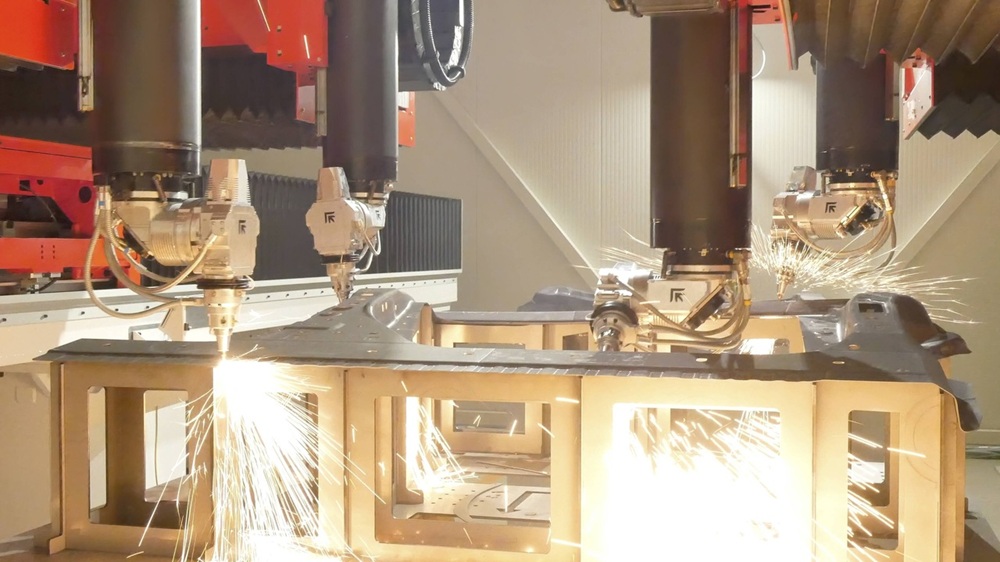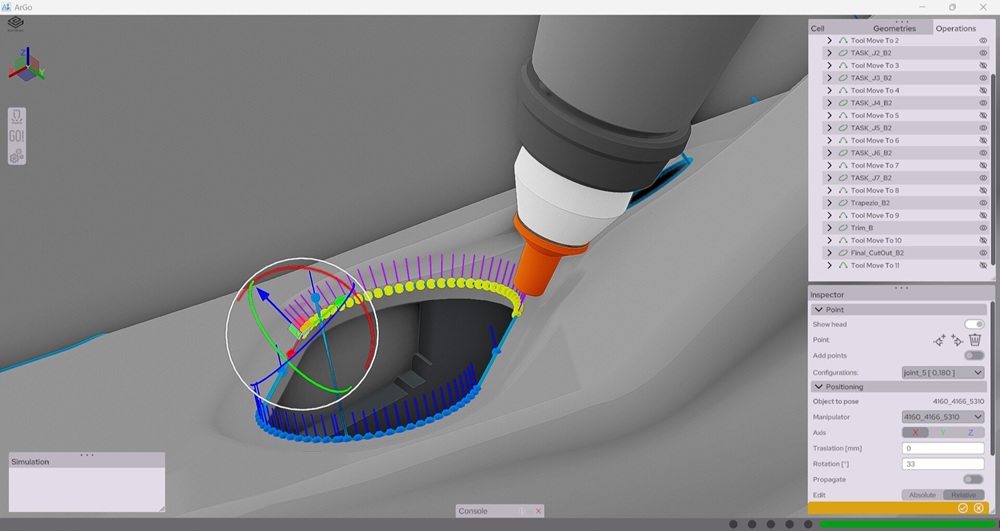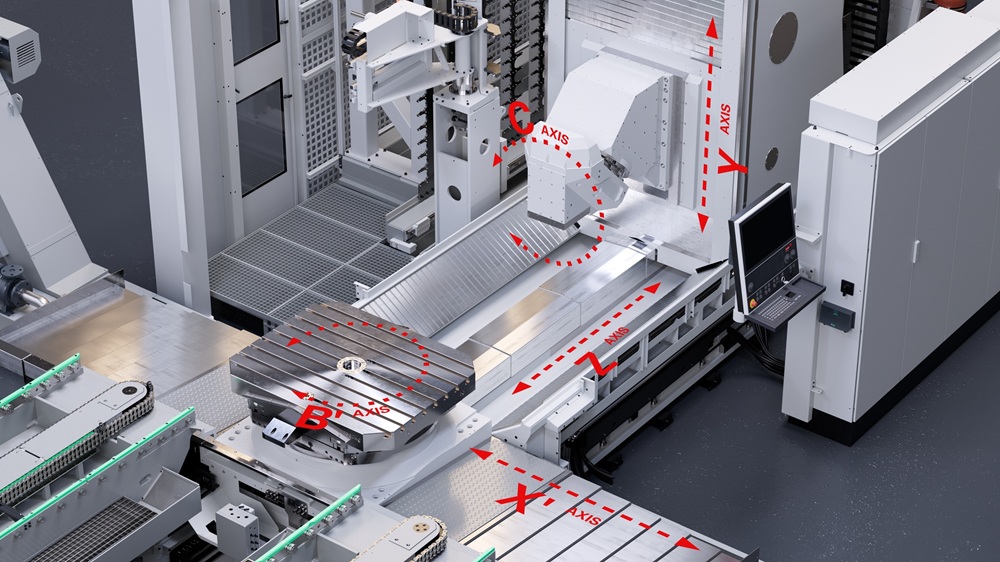Resource-conserving production, reduced emissions and a circular economy protect the
environment and climate. Companies that act sustainably not only secure their
competitiveness but also take responsibility for future generations. Sustainability is also one
of the focal topics at EMO Hannover 2025. Sustainable products and processes are the key
to a society worth living in. The following examples from the metalworking industry show
where the journey is heading.
As one a major suppliers of carbide cutting tool solutions, Ceratizit is committed to greater
sustainability in the industry. To this end, the company is pursuing a comprehensive strategy
with numerous levers for reducing CO 2 . In order to achieve its ambitious sustainability
targets, Ceratizit is implementing targeted measures along the entire value chain, with
recycling a key component.
The specially developed and optimised recycling process makes it possible to obtain a
particularly high proportion of the raw material used for tools and hard material solutions
from secondary raw materials. In addition to conserving resources, the use of recycled
carbide significantly reduces the product carbon footprint (PCF) of products.
“Our aim is to establish a common standard for calculating and classifying the carbon
footprint of cutting tools, hard material solutions and carbide powders on the market,”
explains Ceratizit CEO Dr Andreas Lackner. “This enables us to offer customers the
transparency they want in terms of carbon footprint.”
Ceratizit has developed a calculation model for PCF values, including classification. This has
also resulted in the VDMA standard sheet 35111, which was developed as part of a
consortium. The model serves as a standardised method for calculating the PCF for cutting
tools.
In order to combine maximum performance with the best possible sustainability, Ceratizit
develops carbide grades with the most extensive material cycles in their category. The latest
development, a special milling cutter line, for example, consists of at least 99% recycled
carbide and has the lowest CO 2 emissions in its class. Thanks to the latest geometry and
coating technology, these milling cutters achieve up to 30% higher performance than other
universal tools, reports Ceratizit. They are suitable for many materials, which both increases
production efficiency and minimizes ecological footprint. At the EMO 2025 exhibition in
Hanover, interested parties can find out about the latest developments directly from the
supplier.
Also at the show will be Ingersoll Werkzeuge, where sustainability and environmental
protection are central components of the corporate philosophy.
“We’ve taken various measures to reduce our ecological footprint while remaining
economically efficient,” reports Leon Pulverich, environmental and energy management
officer. “A key step in this direction is the switch to sustainable packaging for many of our
products. By using environmentally friendly materials and reducing packaging materials
overall, we’re helping to minimise waste and protect the environment.”
Ingersoll also offers regrinding services for solid-carbide cutters. This practice extends the
service life of the tools and reduces the need for new raw materials.
“Another highlight of our sustainable initiatives is the installation of a photovoltaic (PV)
system on the company premises,” adds Pulverich. “With an annual electricity generation of
around 700,000 kWh, we can save around 184 tonnes of CO 2 . This measure was also
implemented in response to the rise in energy prices and will help us to reduce costs in the
long term while also protecting the environment. We are convinced that economic success
and environmental protection can and must go hand in hand. At EMO, we’ll find plenty of
impetus to continue along this path successfully.”
From combination tools and tool reconditioning through to hydraulic chucks: at Mapal, the
responsible use of resources is just as much a part of daily operations as the aspiration to
help protect the environment and reduce CO 2 emissions with every new tool. All product
and company divisions play their part in this ambition. Combination tools, for example, are a
key to efficient and sustainable production. If different work steps are combined within one
tool, it saves tool changes and reduces travel distances. Shorter machine running times also
require significantly less energy. Furthermore, less material is required for combination
tools than for individual tools.
MQL-compatible tools enable ecological machining processes by minimising the use of
cooling lubricants. This significantly reduces the waste of contaminated lubricants as well as
disposal and recycling costs. Efficient use of resources is also achieved with replaceable
head systems and indexable inserts. Here, only the drilling or milling heads are replaced and
the inserts turned instead of replacing the entire tool.
In addition, PCD and solid-carbide tools, indexable inserts, and ISO elements can also score
points for durability thanks to reconditioning. By regrinding, replacing the guide pads,
replacing the cutting edges or applying new coatings, the tools regain full performance.
“Sustainability is not a foreign concept at Mapal, but an absolute matter of course in our
ideas and developments, and in our daily work,” emphasises Jacek Kruczynski, chief
technology officer. “Many of our products stand for precision, durability and reliability. If it
says Mapal on it, it’s always of the quality that you would expect from Mapal.”
Last but not least, the Uniq hydraulic chuck, which has won several design awards, is a
sustainable alternative to traditional shrink-fit chucks. Its reduced energy consumption
lowers CO 2 emissions, while the elimination of shrinking processes means that the material
does not fatigue.
Based on decades of experience combined with innovative ideas, Kapp Niles produces
modern generating and profile grinding machines. Sustainable options have been developed
for many components. Finite element method (FEM) analyses, for example, are used to
design components with high rigidity and minimal use of materials. This reduces moments
of inertia and saves drive power. Hydraulic components were largely replaced by electronic
ones and the remaining functional units were optimised by efficient hydraulic units with low
consumption.
Compared with a hydraulic output of 13.5 kW installed 25 years ago, frequency-controlled
pumps with 2.2 kW are now available, with a consumption of 0.04 kW/h during production.
Reduced oil volume, low-Watt valves and pump drive with frequency converter reduce
operating costs and maintenance costs.
Additively manufactured coolant nozzles increase the efficiency of the cooling lubricant
supply by 60% and help to reduce energy consumption in the cooling lubricant system.
Changing the material of the machine bed from grey cast iron to recyclable mineral casting
saves 1.6 tonnes of CO₂ per tonne of material over the entire lifecycle. Intelligent switch-off
functions and a calendar-controlled warm-up program minimise the time the machines are
switched on, while reduced operating pressure and a demand-oriented sealing air supply
reduce compressed air consumption.
Says Ralf Dremel, head of product management at Kapp Niles: “The EU Ecodesign
Regulation 2024/1781 presents machine manufacturers with new challenges in product
development and marketing. These include resource efficiency or the disclosure of the
CO₂ or environmental footprint. Kapp Niles has always dealt with this topic in the past,
including as part of the VDMA’s Blue Competence initiative. We see the ambitious
sustainability targets we have set ourselves internally as an opportunity to secure
competitive advantages in the future.”
With the three focus topics of sustainability, automation and digitalisation, EMO Hannover
2025 offers a clear view of the production of tomorrow with efficient processes. Countless
examples at the trade fair offer visitors the unique opportunity to gather unfiltered, well-
founded information, forge ideas and initiate joint projects – for greater competitiveness
and a more sustainable future.
More information www.emo-hannover.de



















